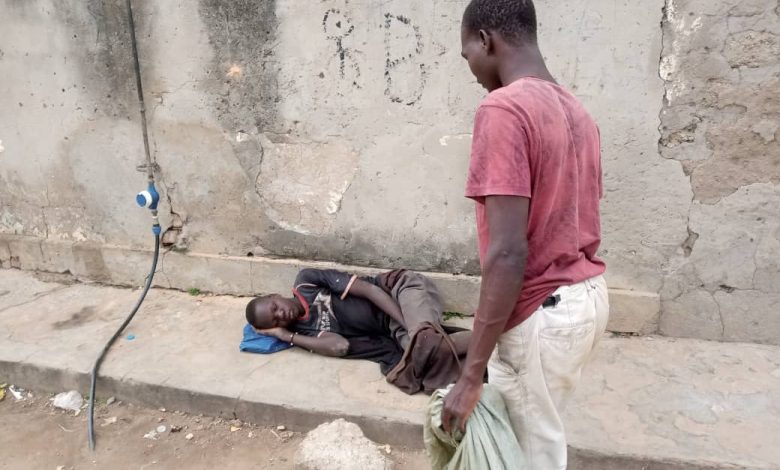Life in the Shadows: Street Children Struggle in Soroti’s Ghetto Corridors

By Steven Enatu
SOROTI CITY
In the heart of Soroti’s bustling streets, a hidden world thrives in the famous ghetto corridor commonly referred to as “Town talks” probably because of the business in the area.
Here, dozens of children, some adults navigate a life of survival living on the margins, addicted to substances, and scraping through petty trade, collection of plastics, and occasional handouts.
Sitting on a stone puffing marijuana openly, Mukasa Haruna, a long-time face in the corridor, reflects on more than 15 years spent among the city’s street children.
He had just brought food for a few of his close allies, a gesture that draws quiet gratitude in a space where meals are never guaranteed.
As he speaks, a boy appears in the background, balancing a sack of plastic waste on his head. In his pocket, another treasure is an empty bottle destined for resale.
For many like him, scavenging for recyclables is the closest thing to a livelihood.
“They come to the streets when they are still good boys,” Haruna explains. “But life here forces them into the bad ways because survival depends on it. If you tell someone to stop, what do you want him to survive on? It is their only source of happiness.”
Haruna says the children find food in multiple ways through well-wishers, from sympathetic traders, or by selling collected items.
On lucky days, he adds, some make as much as 60,000 shillings. Yet the money rarely lasts; it is quickly consumed by drugs, cheap alcohol, or fleeting pleasures.
With no stable homes, the children sleep wherever they can like verandas, corridors, or abandoned structures.
Many have fled abusive homes, neglect, or poverty, while others are born into this life.
“If I tell you that some of these people you see here have been born here and they have loved here for the rest of their lives” he said.
Over the years, several rehabilitation projects have come and gone. But Haruna dismisses them as empty gestures.
“The projects don’t make sense. They come but they don’t change anything. These boys remain on the streets. Sometimes they just cook for them food. Even I can cook for them food,” he says with a shrug.
He believes meaningful change requires a bigger approach, one that places street children at the center of planning and decision-making.
“Some of them are even talented and gifted. Others are computer hackers. Don’t underestimate them. They only need someone to handle them well and everything stops.”
When asked about potential solutions, Haruna admits that transforming the lives of street children cannot happen overnight. Many are addicted to drugs and attached to fast money. But he insists gradual change is possible.
“You cannot change all of them at once. Start with a few. When you change five, the other five will admire the five. That’s how it goes,” he notes.
In Soroti, the number of street children is estimated at more than 200. They face constant harassment, threats from rival gangs, and stigmatization from the public. Yet their resilience persists.
However, Haruna who later we found to be having a sculpture business in Soroti city here said people shouldn’t underestimate the lives of people who live on the streets.
He uses popular musicians turned now politician Bobi Wine and Eddy Kenzo, who once lived similar lives before rising to stardom.
As our conversation winds down, Haruna offers a parting thought, a call to Uganda’s wealthy.
“We have many rich people who even die with their money without using it. Yet our kids are here, who would have made that money produce more money. When money produces money, you’ll be happier. But when money just stays there, stagnant, you won’t find happiness.”
In Soroti city, the ghetto corridor remains both a trap and a refuge, its children cling to hope, survival, and the faint possibility that one day, someone will give them a real chance to live beyond the street.


